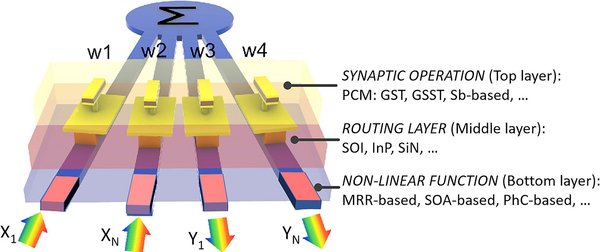
Novel brain and biology inspired computing paradigms can speed up computers and lower their energy consumption for specific, but impactful, tasks
Our brain is able to perform about the same order of operations as a supercomputer but with only a fraction of the power consumption. Designing future hardware circuitry by getting inspiration from brain connectivity can offer a real opportunity to overcome the limitations of conventional electronics, particularly in complex classification and artificial intelligence (AI) tasks like machine learning. As a consequence, novel (non-Von-Neumann) computing architectures, such as neuromorphic or other biologically-inspired architectures, have attracted renewed interests in the last decade. A future-proof solution should rely on best-performing and top-efficient technologies and architectural mixture that outclass current hardware approaches and support new computational paradigms.
We will investigate novel technologies and computing architectures and develop training, control and communication algorithms to surpass energy-efficiency and computation speed of today's AI machines. Three tracks will be followed. Firstly, neuromorphic electronics via memristive nanodevices can be scaled down to ultra-compact neurons and offer fast and highly stable electrical switching, ideal for large area circuits and energy-efficient AI systems with excellent local tunability. Their unique ease of interface makes them ideal candidates for edge-computing applications. Secondly, neuromorphic photonics presents a new research field, which aims to transfer the well-known high-bandwidth and low-energy interconnect credentials of photonic circuitry into scalable neuromorphic platforms, introducing neuron connectivity at several tens of gigahertz clock rates. And thirdly, on-chip, large-capacity data storage can be achieved with DNA. It provides a stable storage medium that is durable for hundreds of years.